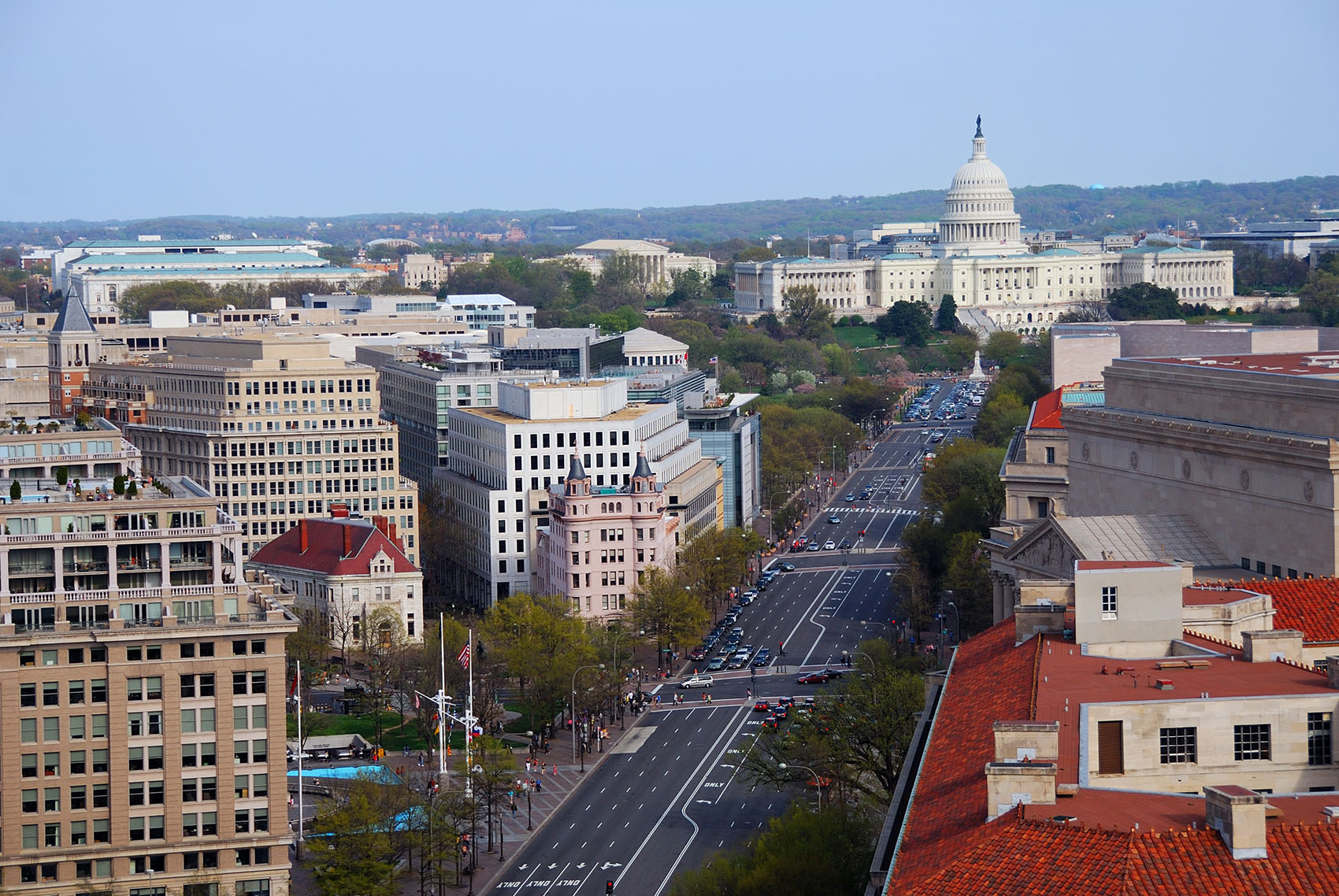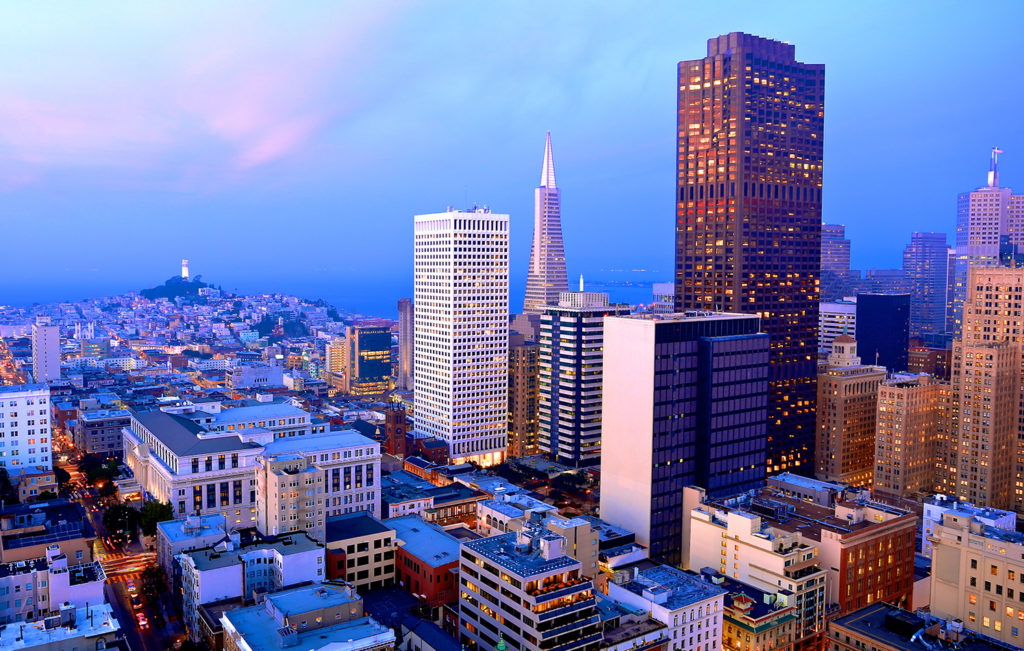In many cities, sooner or later every conversation turns to how expensive housing has become. High housing costs are driving some lower- and middle-income households away and preventing others from moving in. In the most expensive metros, many people are simply priced out. These places have fewer children and a smaller middle class compared with more affordable metros.
Jobs get priced out too. Where housing costs are high, office space also tends to be expensive. Plus, in expensive markets, businesses need to pay workers a premium. Of course, some employers are willing to pay more to be close to a specialized workforce, suppliers, customers or investors. After all, rents and salaries in expensive markets wouldn’t be so high if some businesses weren’t willing to pay up.
So which jobs get priced out of expensive markets? The answer is those dealing with construction, landscaping, freight, and logistics, as well as call centers. In contrast, tech and science jobs tend to cluster in expensive metros, as do some high-end service jobs like fitness managers and pastry cooks.
Jobs missing from high-cost metros
We identified the job titles that are missing from expensive large metros like Washington, DC, Miami and San Jose, but common in other large metros such as Dallas, Atlanta, and Cleveland. We looked at all jobs posted on Indeed in 2017 in the 51 metros with at least 1 million people, comparing the ten priciest metros with the other 41. (See methodology note for details.)
For example, there were 220 groundskeeper job postings per million total job postings in the typical expensive metro versus 540 per million in other large metros. That means groundskeeper job postings were 59% less common in expensive metros than in other large metros.
The job titles missing from expensive metros fall into several categories. Many of these absent jobs relate to housing, construction, and landscaping—like floor technician, concrete finisher, lawn technician and cable installer in addition to groundskeeper. Also lacking in expensive metros are job titles having to do with trucking, freight, and logistics, such as trailer mechanic and freight handler.
Other missing jobs include those involved in administering and processing transactions, including licensed agents, title clerks, and collectors. Finally, some jobs often carried out entirely by phone or online are scarce in expensive metros, such as customer service and call center representatives.
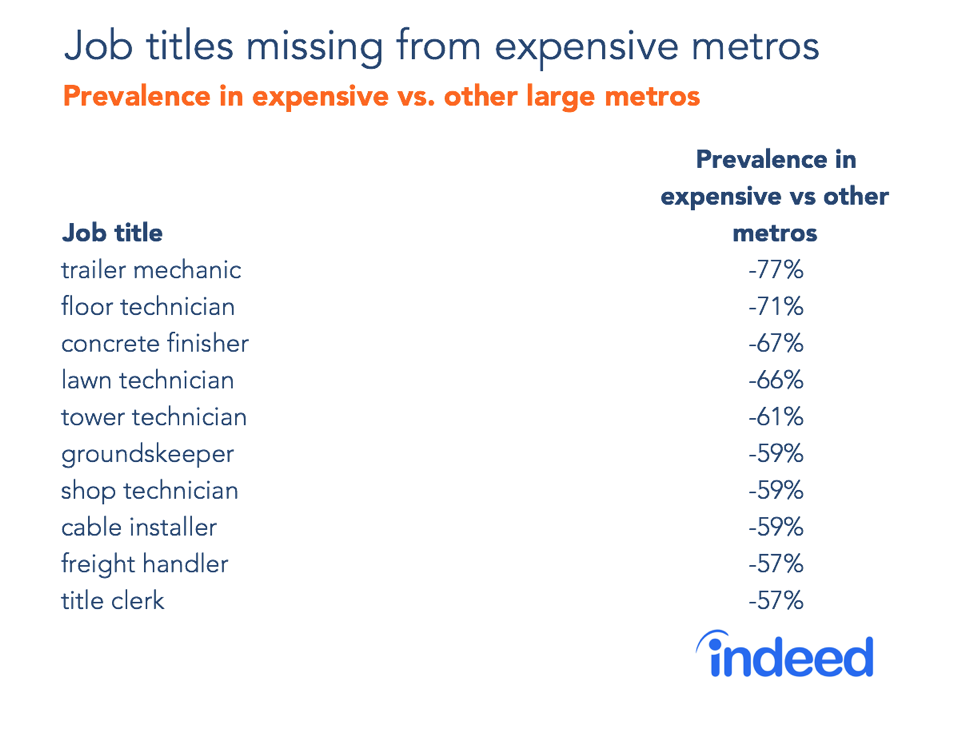
Jobs clustered in expensive metros
Just as many jobs are missing from expensive metros, other jobs cluster in these places but are scarce in more affordable large metros.
Well-paid tech, scientific and specialized managerial jobs dominate the list of those concentrated in pricey markets. For instance, data scientists are four times as likely to be found in expensive markets than in other large metros. In addition, many creative jobs are clustered in these markets, such as artists and creative directors.
While tech, science, and the arts are producing for a national or global market, some of the jobs clustered in expensive metros specialize in serving local residents. These include several therapeutic specialties like ABA (applied behavior analysis) therapists, behavioral therapists, and family therapists. Also, some jobs providing high-end services—like fitness managers, pastry cooks, soccer coaches, and dog walkers—are concentrated in pricey markets.
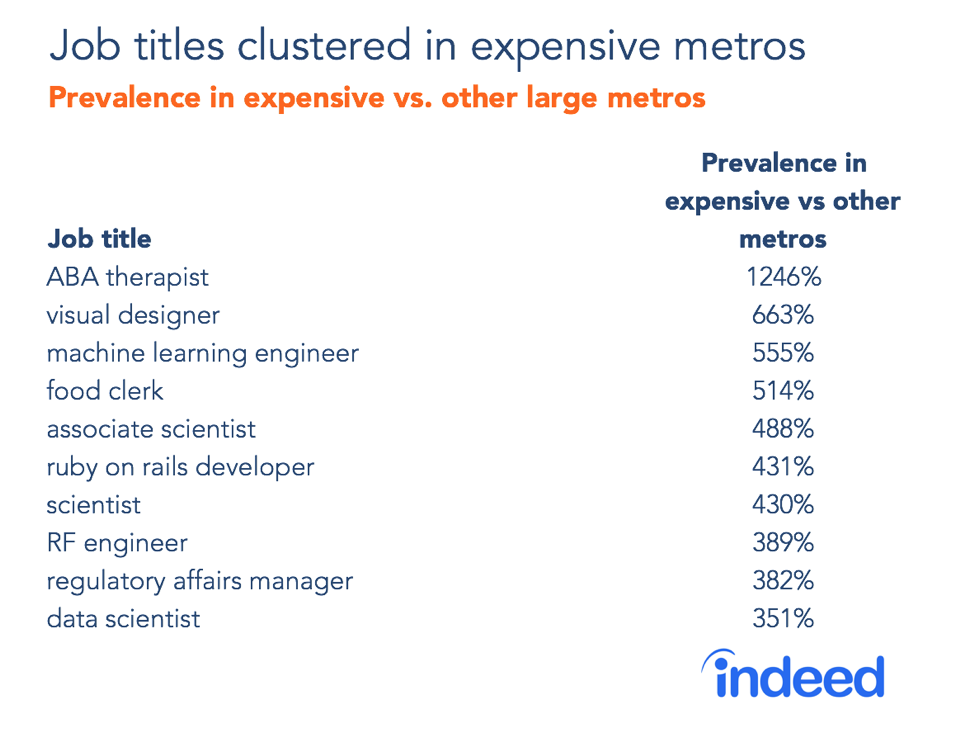
Why do some jobs get priced out?
There are many reasons why jobs get priced out of expensive metros. Some jobs could locate anywhere and lack a special reason to be in high-priced markets. Other jobs are rare in expensive metros because those markets differ from more affordable metros in important ways.
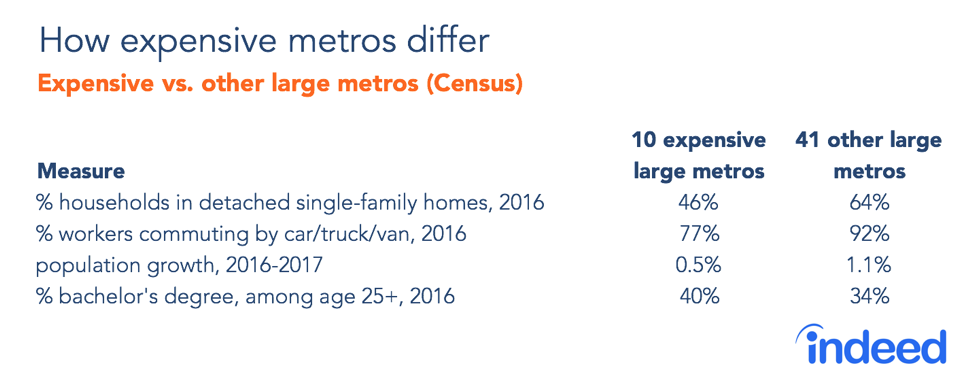
Here are five reasons that explain why some jobs are scarce in expensive metros, while other jobs cluster in those places:
- Some jobs that could locate anywhere are simply priced out of expensive markets. It generally doesn’t make sense to put a service or support function that requires little face-to-face customer contact in a place where office space and labor cost more. Therefore, customer service and call center representatives tend not to be in pricey metros. The same goes for many insurance jobs.
- In expensive metros, land is more precious and is used more intensively. That means fewer single-family houses and lawns, less commuting by car, and more transit, biking, and walking (see table above). As a result, there’s less demand in expensive metros for groundskeepers, lawn technicians, and auto mechanics.
- Expensive metros grow more slowly—in fact, one reason why they’re expensive is that they don’t build enough housing. Pricey metros grew just half as fast as other large metros last year. Thus, many construction-related jobs—like concrete finishers and floor technicians—are rarer in expensive metros.
- The people who live in expensive metros have, in aggregate, a different demand for services, which may reflect demographic differences. As a share of the population, expensive metros have fewer kids, more young adults age 25-34 and more residents with bachelors or graduate degrees. A high concentration of affluent young adults could explain why expensive metros have disproportionately high shares of fitness managers and pastry cooks.
- The ten most expensive large metros are all on the East or West Coast—and that’s no accident. Coastal places tend to be in high demand because of productivity advantages and quality of life. They also have a tighter housing supply because they can’t spread out in all directions. The coastal location of expensive metros makes them poorly suited for transportation and logistics businesses that benefit more from being closer to the geographic center of a national network than being at the edge. That could help explain why many trucking and freight jobs are missing from expensive metros, in addition to the fact they require lots of land.
Together, these reasons explain why expensive metros have a different mix of job postings than other large metros do. It’s not just that some jobs can be performed anywhere and therefore sort into lower-cost locations. Expensive metros have different built environments, demographic profiles, and geographic advantages than other large metros–and those factors help determine why they lack some types of jobs.
Methodology:
We identified the ten most expensive metros among those with at least 1 million people based on the Bureau of Economic Analysis Regional Price Parity data for 2015, the latest available. These include metro Baltimore, Boston, Los Angeles, Miami, New York, San Diego, San Francisco, San Jose, Seattle and Washington, DC.
The prevalence of a job title’s postings in expensive versus other large metros equals the ratio of the median postings-per-million among the 10 expensive metros to the median among the 41 other large metros. The tables in the blog post show the job titles with the most extreme differences between expensive and other large metros. We included in the tables only job titles with (1) a location quotient (relative to national) above one for one group of metros and below one for the other group, and (2) at least 100 postings per million nationally.
By using median, not average, location quotients for each set of metros, we’re focusing on jobs that are missing from or clustered in most of the expensive metros. These exclude jobs concentrated in one or two pricey markets only, like intelligence analysts in metro Washington, DC, or investment banking analysts in New York. Also, jobs missing from expensive markets include only those that are overrepresented in other large metros–these exclude jobs that are more common in smaller metros or rural areas, like correctional officers and satellite installers.
